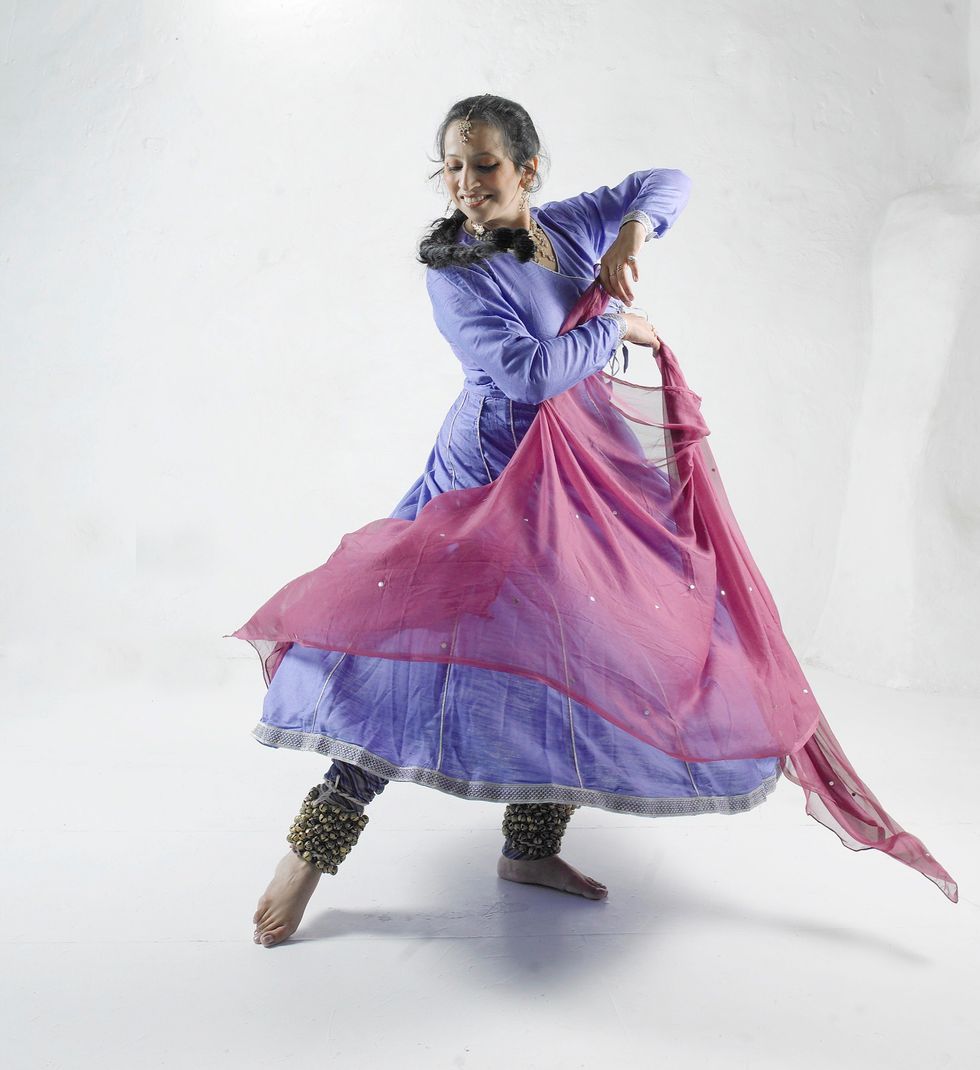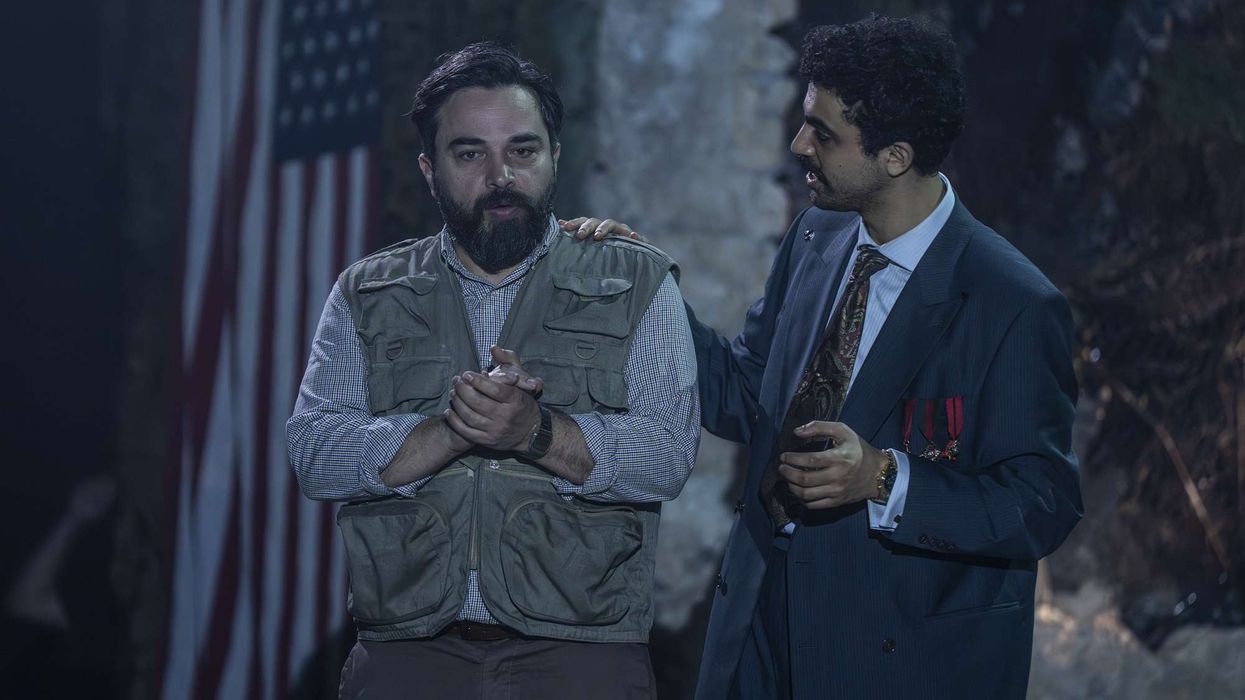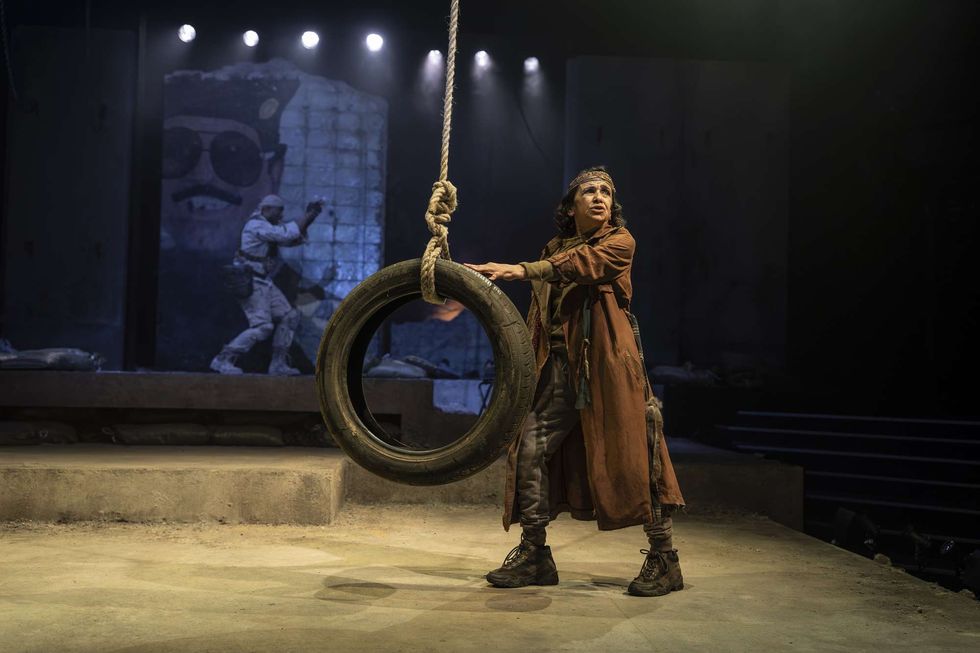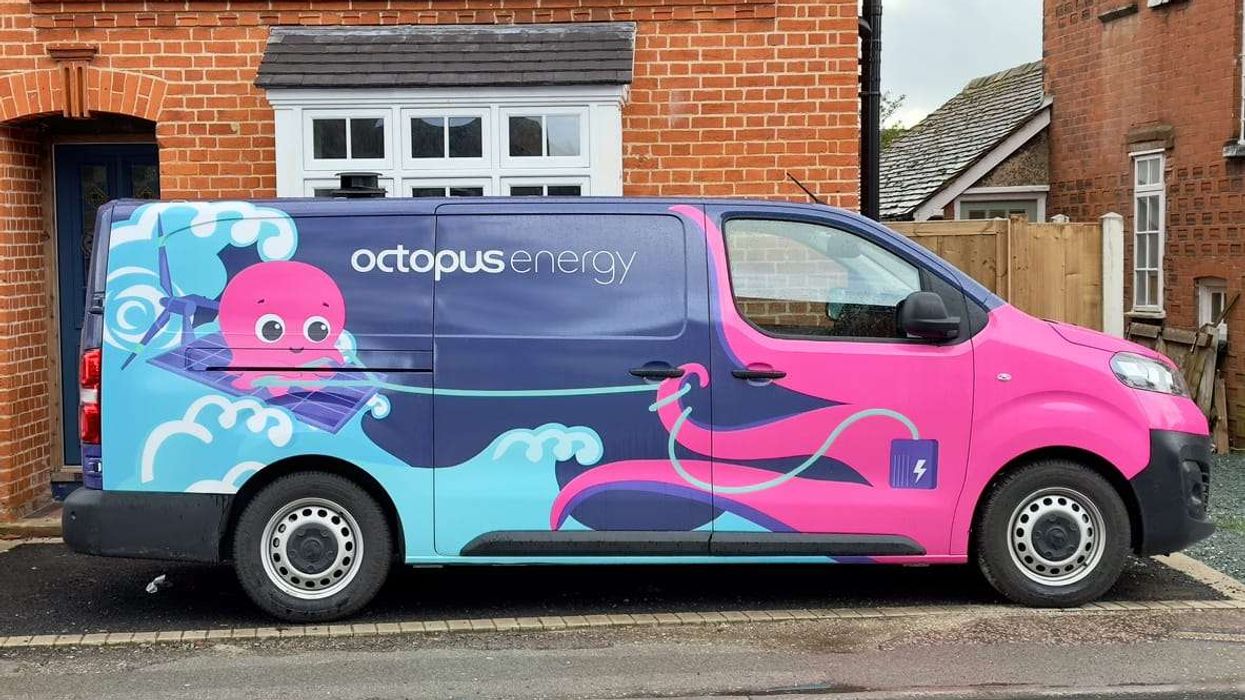CHOREOGRAPHER URJA DESAI THAKORE DISCUSSES HER NEW SHOW KATTAM KATTI
ACCLAIMED Kathak maestro Urja Desai Thakore has put her own unique stamp on the British dance landscape with eye-catching performances, powerful productions, terrific national tours, and cool choreography that adds an extra dimension to the classical repertoire.
Now that theatres are back open again, the founder and artistic director of Milton Keynes-based Pagrav Dance Company returns with her latest offering Kattam Katti, which she has choreographed and created.
The colourful new show performed by four talented UK-based dancers and four live musicians is inspired by the chaos, colour and competition of India’s world famous Uttarayan kite festival. The individual stories illustrate the highs, lows, loves and losses of a joyous but ruthlessly competitive festival, which becomes a metaphor for divisions and inequality throughout the world today. The show is currently being previewed and will have its official world premiere at London’s Sadler’s Wells theatre in November.
Eastern Eye caught up with Urja Desai Thakore to discuss her dance journey, new show Kattam Katti, its key messages and being back in front of an audience post-pandemic.

How do you look back on your journey in dance?
It has been an incredibly interesting journey. I have encountered a lot of obstacles, challenges and really good times. It has certainly been a mixed bag but if asked, I would definitely do all of this again. I would probably avoid some of the mistakes, but I have learned an awful lot from all my experiences. Everything I’ve experienced has shaped me the way I think and the way I create today.
What led towards the creation of Kattam Katti?
Nina Head (who was creative producer for the company at that time) and I were having one of our regular brainstorming sessions. I was talking around a few different ideas I was interested to explore. When I started talking about the kites and the Uttarayan Festival, it really resonated with me. I had a strong urge to visualise my thoughts. I thought it would be really challenging for me to create something that is witty as well as having strong choreography, alongside the underlying tension of the festival.
Had you done something like this before?
I had never done anything like this before, which made it a challenge in itself. It was really interesting for me to see how, despite not liking the festival of kites all that much, I could explore what it is I don’t like and think about aspects of it I do like. I was able to dissect it to find all those multiple layers that informed the show.
Tell us about the production?
I first began thinking about it in January 2018. We were supposed to present the work in May 2020, which of course had to be postponed due to Covid. The first stage of research and development explored the approach and overall vision of the work, with the second looking at the various layers and experimenting with styles and choreography to see what was working and what wasn’t. Then we got down to creating the production with dancers and musicians to turn all our findings and work into a final show
How does this compare to other works you have choreographed and created?
Kattam Katti is very different from any of my previous work. On reflection, each of my previous pieces come from individual episodes of my life but this combines observations from several episodes that have taken place around me. This is the first time I have used an interactive set. Sets I used in the past were either static or not quite as essential to the choreography as they might have been. I was really keen to use musicians in a different way to other classical dance performances.
Tell us about that?
I wanted to incorporate them into the action as much as possible, as well as highlighting their musical skills. This is the first time I have used live musicians as performing bodies and in Kattam Katti they are a very integral part of the work.
What is the key message you want to convey with this piece?
Hope. I feel the piece really talks about the hope, positivity, and resilience we have as human beings, which seems especially relevant in the present day. I also want to convey feelings of togetherness and humour in the chaos of the world we live in.
What inspires you as a choreographer?
Everything! I get inspired by nature, patterns, conversations, literature, and music. I am very open to an acceptance of the things around me and always like to challenge myself and any of my previous perceptions. This often leads me to new findings, and I find that very inspiring. I also like to look at what I consider to be really bad work, so that I can ensure I don’t do things which I personally dislike.
How much does it mean to you that theatres are reopening, and people can enjoy live dance again?
Relief, excitement, and a sense that we are getting there. We have been talking about solidarity and I think this symbolises it. I am really excited that theatres are finally open to full capacity again and that we will be able to watch live art and performance in the way that they should be presented.
How do you feel before a new piece you have created premieres?
Always both excited and anxious. For this show, it has taken us almost three and a half years to get to this point, where we can present the work to the public, and feel really excited about doing so. In the present situation, also anxious, as I hope that everything can go ahead with no pandemic-caused setbacks.
What does dance mean to you today?
Oneness, everything. Dance is who I am today. It’s my existence and lifeline.
Why should we all watch Kattam Katti?
You need to see the show to know the answer. I think the work is a singular and one of a very unique kind. It is performed by all British-born dancers and musicians of Asian descent. I believe that Kattam Katti shows the extraordinary level of Indian classical dance in this country. I hope it is something that everyone of all ages and backgrounds can relate to, and that audiences will laugh, dance and fight with the performers.
Kattam Katti by Pagrav Company has preview performances at Bedford University Theatre (October 20) and Watford Palace Theatre (November 12). Its world premiere performances will be at London’s Sadler’s Wells on November 18 and 19, with a further performance at Folkestone Quarterhouse on November 25. Kattam Katti will undertake further UK touring in 2022.
www.pagravdance.com & www.sadlerswells.com






 Ammar Haj Ahmad, Sayyid Aki ©EllieKurttz
Ammar Haj Ahmad, Sayyid Aki ©EllieKurttz  Kathryn Hunter, Arinzé Kene©EllieKurttz
Kathryn Hunter, Arinzé Kene©EllieKurttz





